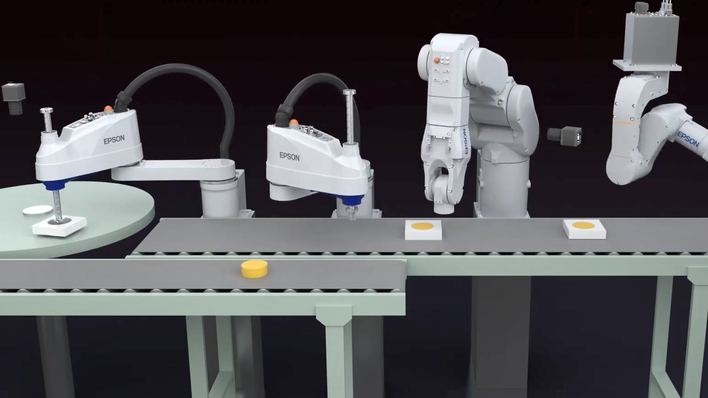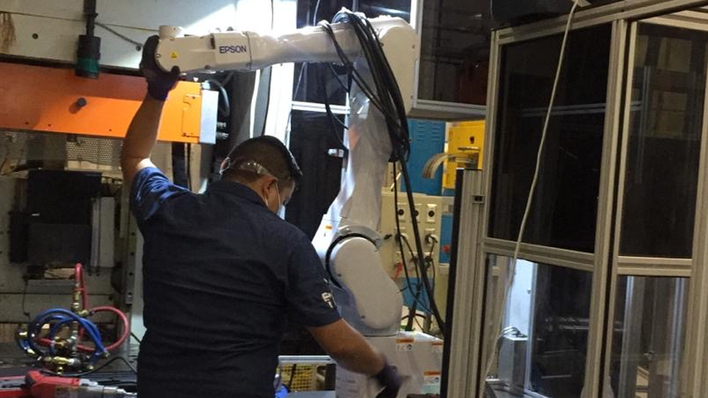For decades, companies have moved their manufacturing and other operations offshore in pursuit of lower costs. Now, with supply chains under increasing pressure, the race is on to bring more of that work back onshore to mitigate shortages and lead time issues. But the return to domestic manufacturing also gives these companies the opportunity to streamline their operations through robotic automation.
The onshoring lure
While many companies remain heavily invested in offshore manufacturing, industry signals indicate a growing interest in onshoring. Global management consulting firm Kearney’s 2021 Reshoring Index found that 92% of manufacturing executives are either considering bringing some manufacturing operations back to the US or have already done so.
Many of the factors driving onshoring stem from supply chain problems. The offshoring boom created vast, protracted supply chains that probed every corner of the globe in search of cost efficiencies. This left U.S. producers relying on chains of suppliers that they didn’t even know. It all worked well enough in a stable economy, but recent global shocks have created fissures in these chains that leave domestic companies vulnerable.
Supply chain analytics company Everstream noted several of these risks in its 2022 Outlook Report. These included overseas labor shortages, as pandemic lockdowns continue to constrain workers in countries including China and Malaysia.
Other worries are environmental. Water shortages are causing issues globally, but especially in offshoring countries. For example, chip manufacturing hub Taiwan suffered its worst drought in over half a century in 2021. In the same year, flooding in China threatened mining operations there. This year, a historic Chinese drought affected power supplies in areas reliant on hydroelectricity. All of these events had an impact on manufacturing and supply stability.
Delays in ocean freight have presented another problem, as space scarcity and irregular shipping led to bottlenecks at U.S. ports. December 2021 saw ships waiting over 30 days to unload at the port in Long Beach, California.
These and other supply chain issues have had an impact on inventory. Traditional just-in-time manufacturing only works in stable conditions. Too much disruption prompts a shift to ‘just-in-case’ manufacturing, where companies must stockpile supplies and finished goods. That affects the bottom line.
The stakes are rising for manufacturers given increasing demand. Despite inflationary worries, consumer demand in several segments is still strong. Automotive demand in Q3 was still relatively healthy, according to industry analyst Edmunds, even though prices are at record-highs for new and used vehicles.
Onshoring to the rescue
Onshoring helps to address these issues. It compresses the supply chain, eliminating risks from uncertain conditions overseas and in transit. A properly-managed onshore operation lowers the number of finished goods on hand, helping companies to better manage inventory costs. And it reduces logistical headaches such as inspection and customs requirements and compresses lead times. This makes companies more responsive and cost-efficient.
The US government is also stepping up efforts to grow home markets. In August, the president signed the CHIPS Act, legislation that introduced $52bn in subsidies for the US semiconductor industry. This supports not only the chip manufacturers themselves, but the upstream providers that make the manufacturing equipment and its component parts.
Robotic automation eases the path to onshoring success
Of course, onshoring comes with challenges. For example, the US still has its own labor shortage problem as people reevaluating their careers choose to leave jobs in areas such as manufacturing. The solution to this challenge is automation. Companies can bridge the labor gap by automating key manufacturing tasks that are typically done by now-scarce human workers.
Automated systems can also perform tasks that are dangerous or ergonomically challenging for employees, such as handling needles or unloading parts from a machine. When a process is automated, throughput and quality are almost universally improved as well. In fact, automation can enhance the entire production process, creating faster, more nimble supply chains that make them more reliable and responsive for customers.
Democratizing robotics technology
Robotic automation used to be an opportunity for larger, well-resourced companies that had the capital and expertise to invest in complex, expensive robotics systems. However, robots are now affordable enough for smaller companies to use. According to ARK Invest, the average cost of an industrial robot unit in 1995 was $133,000. That has dropped consistently, and the company estimates that it will dip below $10,000 in 2025. Some vendors even offer them on a subscription basis to minimize clients’ initial investment.
Robots are also getting simpler to use, thanks to advances in interface design that have made them easier to configure and program. Case in point: many robots are now offered with features such as parts feeding, vision, and force guidance integrated directly into the robot system’s hardware and software. And tablet-based development software has eliminated the need to learn complex robot programming languages, making robotic automation more accessible to those with little or no robot programming experience.
The road to adoption
How can companies best take advantage of robotic automation? The process begins by finding appropriate processes to automate. These should be repetitive and consistent, making them easier to integrate and program while maximizing productivity. Look for tasks that are error-prone when operated by humans, and potentially even dangerous for human operators.
Companies can then define the workflow for these processes, noting the inputs (the materials they’re working with) along with the ideal desired outputs (the state and configuration of the product after the robot has worked on it). It’s important to take variables into account, such as how these products are normally handled, and potential damage points in order to maximize efficiency and ensure consistent output.
Companies should also assess predicted and actual return on investment from robotic automation after implementing a project. Critical metrics to consider here include the cost of personnel and the potential savings in terms of product damage and losses.
When robots get personal
Robotic automation leads to fast, accurate manufacturing that helps to reduce inventory in domestic businesses. However, its benefits extend far beyond this. The ability to quickly configure robots for specific automation tasks makes production more flexible.
More flexible production paves the way for manufacturers to be extremely responsive to individual customer needs in ways that were more difficult when dealing with suppliers half a world away. Dentists can produce their own custom-fitted plates in-house. Small manufacturers can create fishing lures selected or perhaps even designed by their customers. Companies can quickly produce parts to fit specific customer needs, creating a more personal, responsive business model that simply isn’t possible when dealing with a protracted supply chain across the globe.
With the appropriate planning, robotic automation is an accelerator for onshoring. It enables companies to bring critical tasks back into a domestic environment while introducing more efficient, accurate processes. And thanks to advances in robotics technology, it’s more accessible than ever.
![]()



